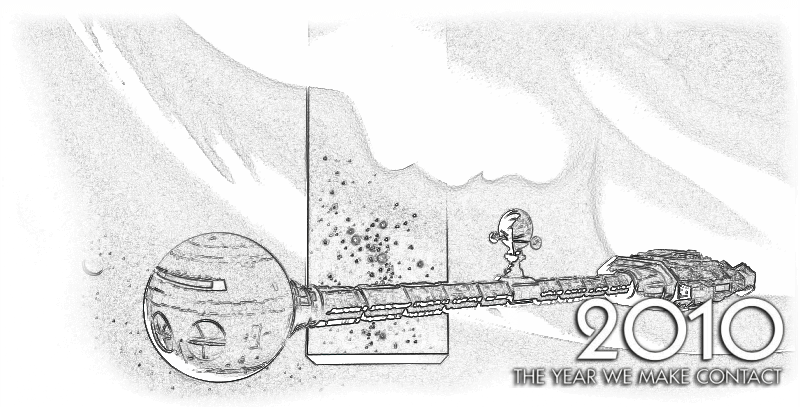John Lithgow may have been born into circumstances that made his acting career more or less an inevitability, but it did not really pan out that way. Not at first anyway. Even though he was immersed in the world of the stage from a very young age, he could never envision himself choosing that career.
Born 1945 in Rochester, New York, to actress Sarah Jane, and Arthur Washington Lithgow III, who was both a theatrical producer and director. John's father was born in Puerto Plata, Dominican Republic, where the Anglo-American Lithgow family had lived for several generations.
His father founded and managed theaters and Shakespeare festivals, so John and his family moved frequently. Not until he was 16, and his father got a permanent position as head of the McCarter Theater in Princeton, New Jersey, did the family settle down.
 |
| John Lithgow anno 1962. |
On the set
John Lithgow sat down during shooting to talk about his involvement in 2010.
Lithgow has an extensive background in stage work and is an experienced theater actor. He mentions how different, however, acting for the camera and acting for the audience can be. “Movie directors tend not to direct you much at all,” he says. “They're much more into staging and the camerawork.”
While it certainly is true that movie directors are more involved in the production as a whole, Lithgow seems to be of the opinion that a lot of the responsibility of the acting is placed squarely on the shoulders of the actors. “More often than not, you arrive, and you’re expected to start acting immediately,” Lithgow observes. “The director hardly has a word to say to you. You’d be amazed. Some of them are very candid about it. Peter [Hyams] said, ‘Boy, these guys who direct plays, and they have four weeks of rehearsal? I wouldn’t know what to do.’ And he doesn’t.”
According to Lithgow, movies are mostly made with little to no acting preparation. “You arrive, the camera rolls, and you start acting,” he says. “It’s as simple as that.”
There are, however, perks in the movie-making world that are simply not available to a stage actor. One such thing is the machinery used to shoot the scenes that require the actors to be weightless. Lithgow fell in love with the machine immediately.
“This guy, Bob Harmon, this English flying wizard,” says a smiling Lithgow, “he has worked out this amazing system. It takes three men to fly one: one to move you this way [moves hand horizontally], one to move you this way [moves hand vertically], and one to move you this way [spins hand]. And then you move yourself every other way just by shifting your weight. You're spun around, and twisted and turned.”
Lithgow found the experience of weightlessness exhilirating. “I just loved it, traveling about twenty miles an hour across the soundstage!”
 |
| Walter Curnow (John Lithgow), floating in space. |
“I just loved it,” he says. “It was like the ultimate amusement park ride.” At some point during shooting it appears Lithgow was perhaps enjoying his flights across the soundstage a little bit too much. “Yes, they kept telling me, 'John, just calm down up there! Astronauts in space don't clown around!' [laughs]”
The production of 2010 is MGM’s largest production of 1984, and besides being impressive, the sets have an effect on all the participants, including of course the actors.
“Acting in the film,” Lithgow explains, “is really being a small part of an enormous, technological wonder. I mean, just look at all these sets, and all this machinery around us! I’ve never been a part of anything like this. It sort of dwarfs the day-by-day challenge of acting it, you know? [laughs]”
Ultimately, regardless of the setting the nature of the acting craft is not that different, Lithgow notes. “Of course,” he says, “when you come down to it you have to be there, you have to provide a character – the characters and the story is what it’s all about – but you do feel slightly dwarfed by the magnitude of the project.”
Detente
One of the plot devices in the film, as well as in the book that serves as foundation for the script, is the co-operation – or lack of it – between the Russian scientists and the American scientists in the Russian-American crew on their way to the Jupiter system in the spaceship Leonov. The plot presented new challenges for movie director and producer Peter Hyams.
Lithgow explains. “Well, the plot of the film, involving a Russian-American voyage, Peter has gone and geared up these marvellous Russian actors,” says Lithgow. “This guy who plays Max, the person who becomes an instant friend of Curnow's, we become instant friends!”
Lithgow and Russian actor Elya Baskin, who plays Soviet engineer Maxim Brailovsky, struck up a quick friendship during the shooting of the film.
“Elya [Baskin] and I, we sit around, and he teaches me how to say 'cow', and 'horse' and 'cat' in Russian,” muses a visibly entertained Lithgow.
“I'm taking advantage of this situation,” interjects Baskin. “I never teach him dirty words.”
“You see,” laughs Lithgow. “The two of us represent detente in this movie!”
The plot of the film, as a continuation of the plot in the first one, involves extraterrestrial intelligence, manifest most dramatically in the mysterious monolith. Whether humans will ever make contact with alien intelligence is something that will by necessity remain in the realm of philosophy and metaphysics. Never the less, all involved in the making of the film have their own thoughts regarding the topic.
“I certainly think there's a chance of different forms of life existing out there,” Lithgow philosophizes. “I certainly hope so.”
Images copyright ©1962-1984 Princeton High School and MGM.

No comments:
Post a Comment